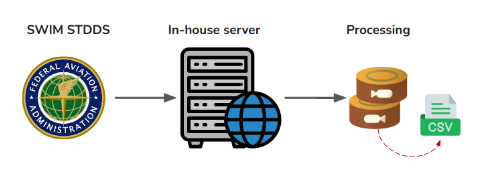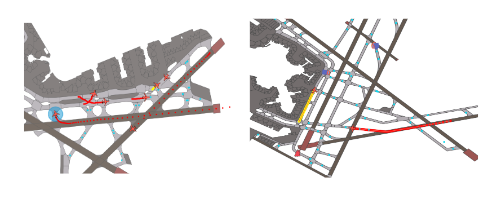
Our Motivation
The growing demand for air travel requires technological advancements in air traffic management as well as mechanisms for monitoring and ensuring safe and efficient operations.
Some trends…
A close call…

A runway incursion at Boston-Logan Intl. Airport (2x speed)
To improve airport safety and efficiency and encourage further research in this direction we introduce Amelia, a large-scale dataset of airport surface movement and a toolkit for data analysis, visualization, benchmarking, and behavior modeling.
Our dataset, Amelia-42 comprises more than two year’s worth of data collection across 42 airports and TRACON facilities within the US National Airspace System, which is ∼9.19TB of raw data. We also release Amelia42-Mini, a 15-day sample per airport, fully processed data on HuggingFace for ease of use.
Additionally, inspired by the success of motion prediction models in the AV domain for safety monitoring and multi-agent coordination, we introduce Amelia-TF, a transformer-based large multi-agent multi-airport trajectory forecasting model. Trained on Amelia10-Bench, consisting on 292 days or over 9B tokens of position data encompassing 10 different airports, available on HuggingFace.
Keywords
Aviation | Machine Learning | Deep Learning | Data Science
Trajectory Prediction | Anomaly Detection | And More…
Our Framework
Our Code
Principal investigators
Team members
Collaborators
Papers
 Amelia: A Large Model and Dataset for Airport Surface Movement Forecasting (non archival)
Amelia: A Large Model and Dataset for Airport Surface Movement Forecasting (non archival)
Ingrid Navarro *, Pablo Ortega-Kral *, Jay Patrikar *, Haichuan Wang, Zelin Ye, Jong Hoon Park, Jean Oh and Sebastian Scherer
*Denotes equal contribution
🏆 Best Student Paper Award
@inbook{navarro2024amelia,
author = {Ingrid Navarro and Pablo Ortega and Jay Patrikar and Haichuan Wang and Zelin Ye and Jong Hoon Park and Jean Oh and Sebastian Scherer},
title = {AmeliaTF: A Large Model and Dataset for Airport Surface Movement Forecasting},
booktitle = {AIAA AVIATION FORUM AND ASCEND 2024},
chapter = {},
pages = {},
doi = {10.2514/6.2024-4251},
URL = {https://arc.aiaa.org/doi/abs/10.2514/6.2024-4251},
eprint = {https://arc.aiaa.org/doi/pdf/10.2514/6.2024-4251},
}


















